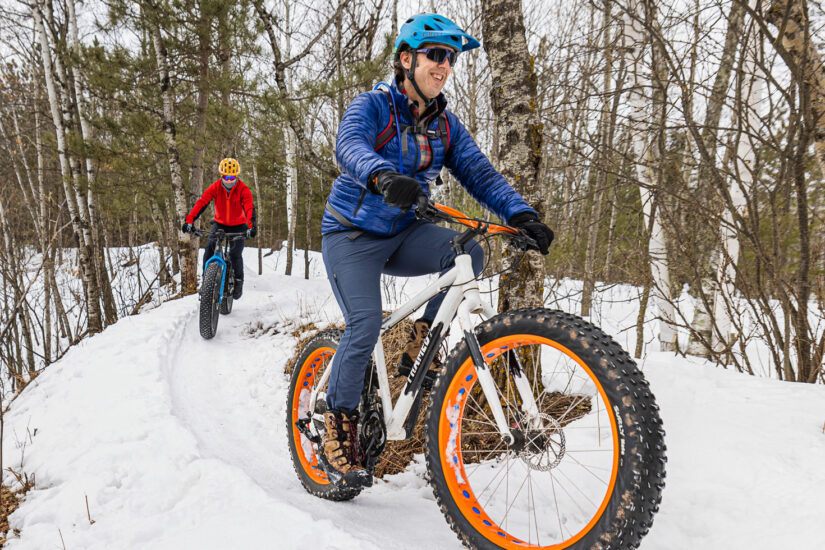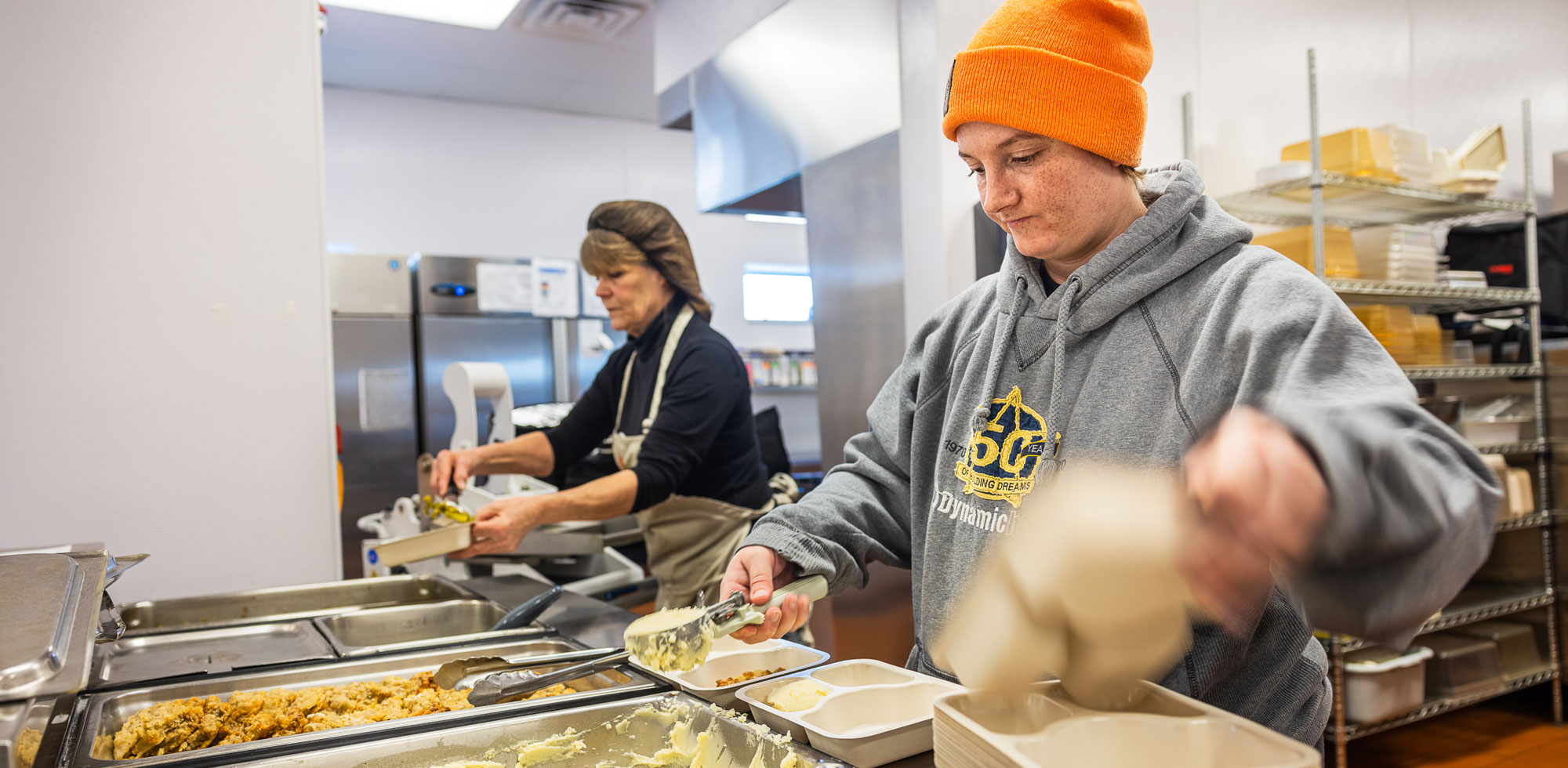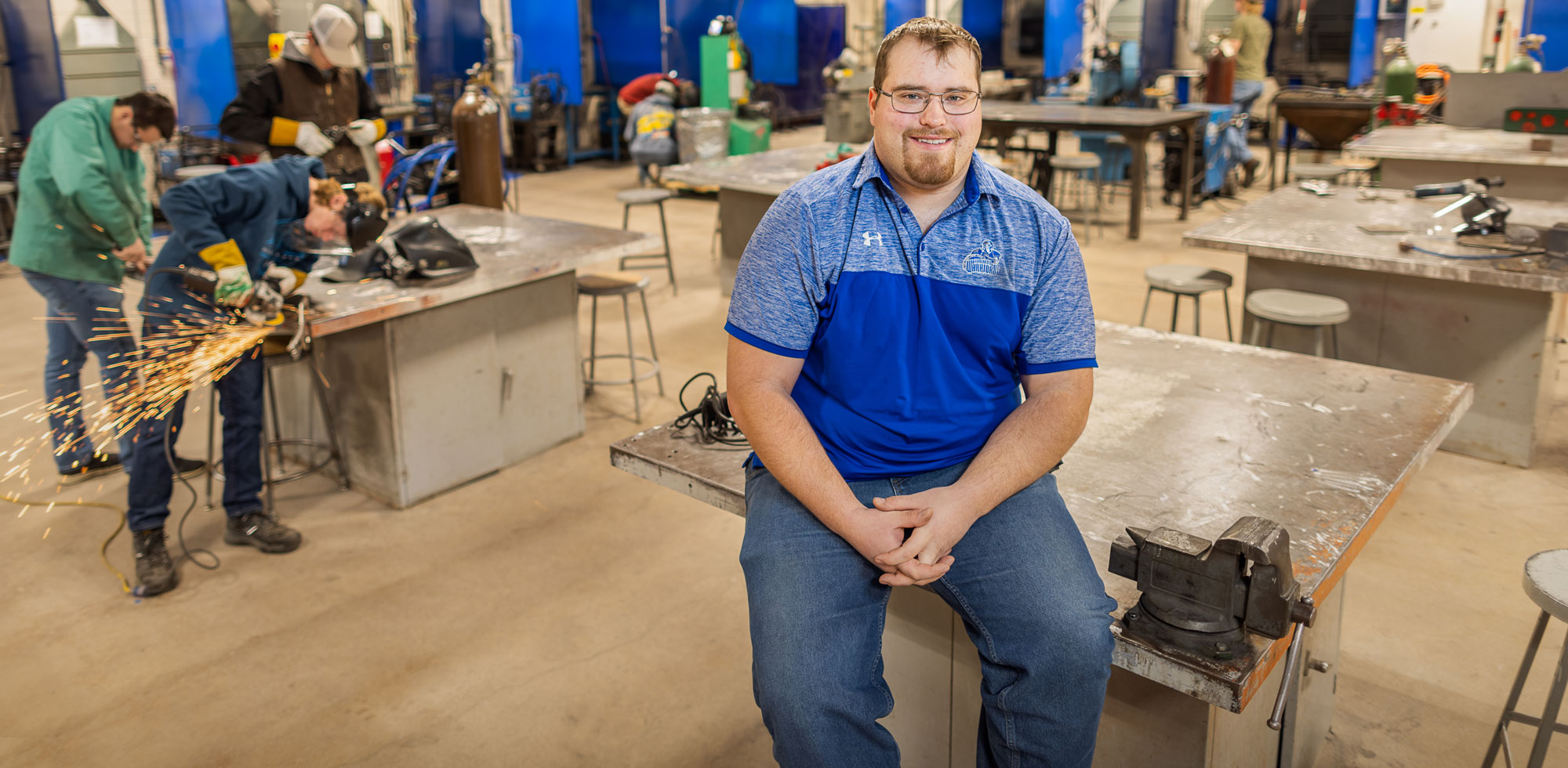
A Little Goes a Long Way
Years later, Initiative Foundation seed grants are still paying big dividends
By John Reinan | Photography by John Linn
A blizzard was howling on the Cuyuna range that night in January 2001, hardly a good omen for a gathering that could shape the future of the depressed mining towns of Central Minnesota.
Organizers of a community meeting wondered if anyone would even show up to the gymnasium at Crosby-Ironton High School. Their worries were unfounded.
More than 200 townspeople braved the storm and filled the gym, eager to share ideas on generating jobs and economic activity in an area where iron ore mining once reigned supreme.
Out of that meeting came a proposal that many initially dismissed as unworkable, if not downright bizarre: Create a mountain bike trail amid the pits and mounds of the former mining area.
The crazy idea found a supporter in the Initiative Foundation, which made a small grant to a community group to do a feasibility study. Now, a generation later, Crosby and the Cuyuna area are among the hottest destinations in the nation for mountain bikers, with an ever-growing trail network that’s drawn not only tourists, but permanent residents, as well.
That small grant was a seed that supported a stunning revival in the old mining district with years of dedicated work from hundreds of residents.
“It’s hard to imagine a community in our region that has been more transformed in the last 20 years than Crosby-Ironton,” said Don Hickman, Initiative Foundation vice president for workforce and community development. “Somebody saw something and imagined it could be bigger and greater.”
Seed grants can be crucial, not for purely financial reasons but because they show a community someone believes in it.
“One thing an infusion of dollars can do is provide hope,” said Lissa Pawlisch of the University of Minnesota Extension’s Regional Sustainable Development Partnerships. “There’s this level of, ‘Someone believes in this concept. Someone besides me has validated this concept.’ Hope and confidence allows lots of folks to take that next step and advance that project.”
In this edition of IQ Magazine, we take a look at three projects that received early Initiative Foundation grant support and how they grew into sustained programs that continue to make a difference in people’s lives in Central Minnesota.

HILLTOP REGIONAL KITCHEN
With an aging population, rural Minnesota needed innovative ways to serve its older residents. The Hilltop Regional Kitchen in Todd County has shown the way—and is now expanding its mission to include housing as well as nutrition.
About a decade ago, the Foundation gave a grant to the Eagle Bend community to develop a kitchen to prepare senior meals. An immediate success, it wasn’t long before the kitchen was outgrowing its quarters in the local senior center.
With help from the Initiative Foundation, along with the Blandin Foundation, Lutheran Social Services and Sourcewell, Hilltop Regional Kitchen was renovated and moved into a larger space in the empty Eagle Bend High School building. The grassroots initiative allowed the kitchen to prepare frozen meals bundled in two-week packages for delivery to seniors in Todd and Morrison counties. Seeing the value in the kitchen’s regional approach, the state of Minnesota gave the project a six-figure grant and hailed it as a model for others to follow.
In 2020-21, as the COVID-19 pandemic raged, Hilltop delivered more than 200,000 meals.
“The Hilltop Regional Kitchen is one of the phenomenal examples of success in our home grant program,” said Dan Pollock, assistant commissioner of continuing care for aging adults at the Minnesota Department of Human Services. “It has been vitally important during the pandemic, keeping people safe in their own homes, offering partnership models that use innovative approaches to help adults remain independent.”
Verna Toenyan, Todd County’s director of aging services, said early Initiative Foundation support was crucial to the project’s success. “There is no way we would be where we are if it hadn’t been for the Initiative Foundation,” she said. “Not even a 1 percent chance.”
The Foundation also is supporting the next step for Toenyan and her team of community volunteers to transform another wing of the vacant high school into senior living. The Foundation awarded a grant for a community housing survey to determine the need. Now the Legislature has appropriated $1.5 million to build about 20 apartments in the school building.
The projects have galvanized the community and allowed residents to work together on a common goal.
“If I told you the number of hours people have volunteered to work on this project, you wouldn’t know where to put zeros and commas,” Toenyan said. “One of the things the Initiative Foundation and the Blandin Foundation have taught me and our volunteers is how to do that connecting – how to bring people to the table.”

BRIDGES CAREER ACADEMIES & WORKPLACE CONNECTION
Another program that has benefited from the Initiative Foundation is the Brainerd area’s Bridges Career Academies & Workplace Connection. In its 15th year, Bridges is an example of a program that’s continued to grow.
The Foundation helped to fund, facilitate and guide the first planning and visioning session for Bridges, serving nearly 15,000 students in 28 high schools. Bridges began as a job shadowing experience, giving students exposure to career options. That evolved into the current model, a deeper dive in which students enter a career academy focused on an area of interest, such as culinary or business management. Classes and career experiences with local businesses work together to produce high school graduates ready to begin a career or to pursue postsecondary education.
Bridges is set to undergo another transformation. Core aspects of the program are transitioning to management by Sourcewell, the Staples-based public service cooperative and a close Initiative Foundation partner. The specialized career academies will be streamlined into three broad categories: manufacturing and agriculture; health and human sciences; and business and hospitality.
Students will get exposure to different job possibilities within those broader categories and can focus on a specific path as they progress toward graduation.
But the overall goal remains the same: preparing students for jobs and postsecondary education leading to careers in Central Minnesota, said Kathy Moore, who oversees the Bridges program as director of workforce development for the Brainerd Lakes Chamber of Commerce.
“It’s so much easier to take the child that’s here, who loves the lakes and loves the nature, and mold them into something, rather than bringing in [a worker] from outside,” she said. “We all have the same mission. We want the kids to succeed and we want a viable workforce.”
Ted Abear is a prime example of what the Bridges program hopes to achieve. Abear went through the Bridges program in 2007 at Crosby-Ironton High School. He was hoping for a career in law enforcement. But after exposure to police work through the program, he decided it wasn’t for him. A job shadow with a paramedic squad had the same result.
But when Bridges connected Abear with Deerwood Bank, it clicked. So when he graduated from St. Cloud State University, he returned to Deerwood and is now vice president of business banking.
“Bridges showed me there’s a lot of good-quality, high-paying jobs that are close to home,” Abear said.
Curtis Brisk found welding through the Bridges program at Pierz High School. Now he’s in his fifth year as a welding and small engine instructor at Brainerd High School, where he works with Bridges students.
“These programs are just great for kids to get their feet wet in different careers,” he said. “Four-year college is definitely not for everybody. You can get a good career in a year or two [after high school] and make a living and support a family.”
The Bridges program is an excellent example of how investing in education can help boost the economy and keep talented people living in the area.

CUYUNA COUNTRY STATE RECREATION AREA
The creation of mountain bike trails at Cuyuna Country State Recreation Area demonstrates how an idea can gain traction when given a boost.
“We get a new business every month – a hardware store, a restaurant, a boutique,” said Crosby resident Barb Grove, who was instrumental in drumming up early enthusiasm for the mountain biking initiative. “There were 50 houses that were built for the miners by George Crosby, and the City Council was thinking of taking them down. And here comes Airbnb, and they remodeled all of them and brought them up to code. And so we’ve got this wonderful renaissance.”
More than 160,000 mountain bikers rode the trails in 2020, an eightfold increase since the first section opened a decade earlier. One of those who rode that first year was Aaron Hautala, who was immediately hooked. It wasn’t long before he and his wife moved to Crosby and opened Strateligent, a marketing business.
Under his leadership as president of the Cuyuna Lakes Mountain Bike Crew, the single-track trail will grow by the end of this year to about 70 miles.
It’s important for non-bikers to realize these aren’t just rough ruts carved haphazardly through the woods. Instead, these are professionally designed and built trails, carefully calibrated to give a thrilling and rewarding ride, using the terrain to provide natural momentum.
How special are they? The International Mountain Bicycling Association rates them as better than the trails at the world-class resort area of Aspen, Colo.
Early on, Cuyuna trail supporters commissioned an economic impact report showing that the trail system could return as much as $21 million a year in economic benefit to the region when it was built out beyond the early phase. In fact, ridership numbers have already blown past their goals, and the financial returns may be even greater.
“I call it human-powered heaven,” said Hautala, noting that entrepreneurs, educators, healthcare professionals and young families have moved to the region in recent years just for the recreational opportunities.
“Traditional economic development people always argued with me, saying we have to recruit a business with 300 employees that pays $90,000 a year,” Hautala said. “My view was always, we’ve got to go small to get big. We’ve got to make this into a place where people want to live. Then, hopefully, one day, we can recruit an outdoor manufacturing company and get that big business that the economic development people wanted to start with.”
One packaged meal, one career step and one pedal at a time—each project began with the seed of a good idea and a little funding to help it gain momentum.